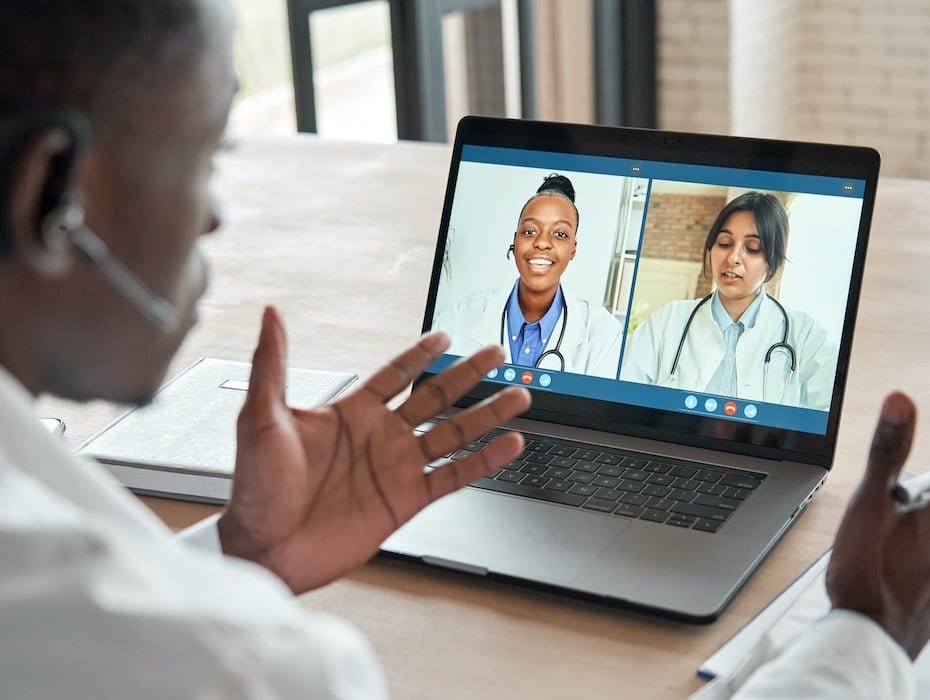Necessity may typically be considered the mother of invention, but when it comes to telehealth, it may be more accurate to say that necessity has been the driver of adoption. Though the technologies to support virtual care models have been around for some time, it took a pandemic for usage to truly take off.
Current state of telehealth
In 2020, telehealth adoption skyrocketed, with 46% of U.S. consumers turning to virtual healthcare services compared to 11% before the pandemic, according to McKinsey. Healthcare providers, meanwhile, say they’re seeing anywhere from 50 to 175 times the number of patients via telehealth than they were before COVID-19. Moving forward, McKinsey predicts that up to $250-billion in current healthcare spending could be shifted to virtual models.
But telehealth models are still far from maturity. Approximately half of healthcare organizations polled by Spyglass Consulting and RingCentral in a new report have yet to establish an enterprise-wide mobile communications strategy. Meanwhile, care providers say bottlenecks and inefficiencies contribute to burnout among healthcare workers and may erode the effectiveness of virtual care models.
Telehealth success requires optimizing clinical communications and collaboration
In a new RingCentral webinar, we chatted with Gregg Malkary, Founder and Managing Director of Spyglass Consulting, about the next imperative for scaling telehealth services and improving outcomes for care providers and patients alike: optimizing clinical communications and collaboration via streamlined technologies and processes.
Burnout alert: a current snapshot of clinical communications and collaboration
Some good news: the vast majority—90%—of healthcare organizations included in the Spyglass/RingCentral research report that they have invested or plan to invest in a mobile communications platform to support telehealth programs.
Disjointed communication tools cause problems
The less good news: care providers say they’re using a complicated, disorganized patchwork of communication tools that can lead to a variety of problems throughout the care continuum.
Clinicians are experiencing communications overload
“Clinicians are experiencing communications overload,” Malkary told webcast attendees. “They’re overwhelmed by the overhead paging system, incoming voice and text communications, an endless stream of biomedical alarms, and constant interruptions by colleagues, patients, and family members. Clinicians are dissatisfied with the antiquated communication tools provided by the hospital IT, including landline phones, pagers, and proprietary VoIP handsets. Many are using their own personal smartphones and unsecured third-party messaging tools as a workaround to address perceived communications inefficiencies, which of course poses a potential risk of a HIPAA violation and a significant monetary fine.”
Negative effects of multiple communication tools and processes
And while all these communication tools and processes are meant to improve care delivery, in their current state, they’re having the opposite effect:
- 51% of hospitals say current communications technologies and/or processes have a “somewhat” or “extremely” negative impact on staff burnout
- 50% say current technologies and processes are helping but there remains room for improvement
- 0% of respondents say current tools and/or processes have a positive impact on staff burnout
In other words, the very tools and processes designed to enable telehealth will likely lead to breakdowns if not carefully evaluated or optimized.
Taking a closer look at clinical communications and collaboration
Optimizing clinical communications and collaboration is a five-step process that begins with a hard look at the effectiveness of current tools and processes. Only then can healthcare organizations begin to identify compelling usage models, standardize communications workflows based on best practices, integrate tools within existing workflows, and collaborate with other care providers to operationalize solutions.
Current state of clinical communications
Where are current tools and processes falling short? In a live poll, webinar participants pointed to the following:
- Inability to securely share or exchange ePHI in real time (50%)
- Nurse-to-physician/physician-to-nurse communication delays (33%)
- Inability to locate or reach desired stakeholders (17%)
- Disparate EMR access across multidisciplinary teams (17%)
- No or slow response to voice or email messages (33%)
Integrated communications would improve point-of-care collaboration
But they also pointed to one capability above all others to relieve existing pain points. Even more than things like integrated facility directories or an ability to share information, participants said a single, integrated messaging, video, and phone (MVP) application would help improve access and collaboration capabilities among care teams.
What is the ideal clinical communications platform?
That said, not just any application will do. The unique demands of healthcare teams require an underlying communications platform that also offers the following:
- Meets security requirements/HIPAA compliant
- Middleware and diverse endpoint support
- EHR integration
- PBX integration to enable communication between mobile care providers and non-mobile support staff
- Integration with productivity and administrative support tools
- Detailed usage reports to measure and quantify ROI, support ongoing process optimization
The next step forward for telehealth
Reviews of the current state of clinical communications and collaboration cannot be ignored. From patient admissions to rounds to transition of care, healthcare leaders tell us that inefficient communications and collaboration may increase their risk of burnout—ultimately affecting the wellbeing of patients and care providers alike.
With so many people involved in patient care, perfect collaboration and communication may be a lofty goal. But taking the time to understand ongoing challenges and to identify technologies and processes that can improve—if not eliminate—existing pain points is the crucial next step in realizing the potential of telehealth.
Originally published Dec 02, 2020, updated Jul 25, 2024





